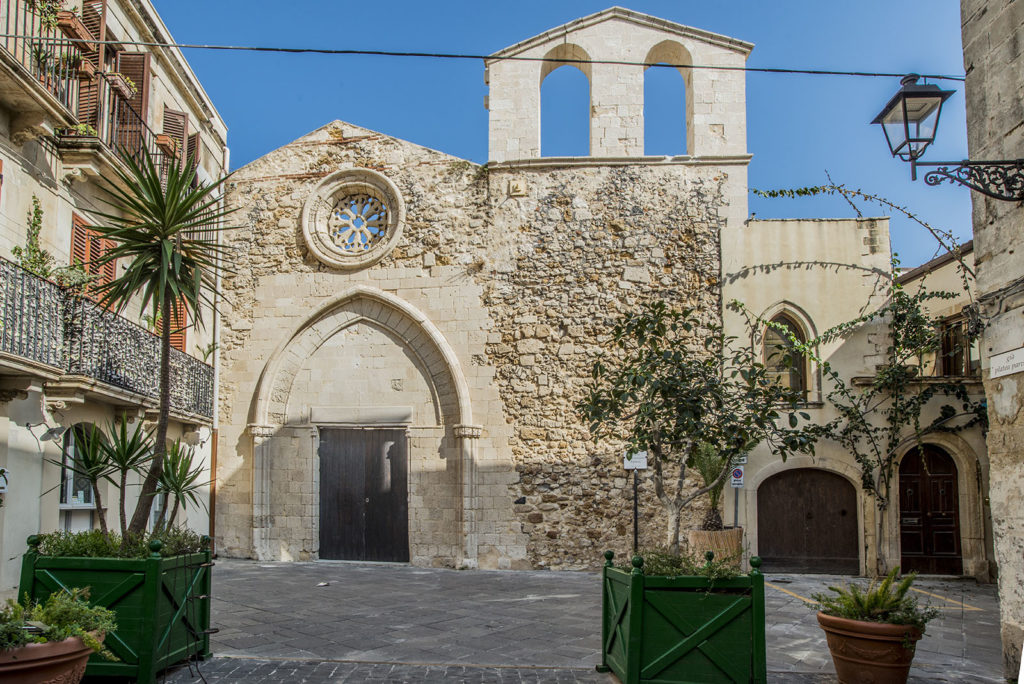At Giudecca the air element is linked to a spectacular open-air church, which was once the Jewish quarter’s synagogue: the basilica of San Giovanni Battista (St. John the Baptist).
The basilica, also known as the church of San Giovannello, is located in Piazza del Precursore.
The synagogue’s origin is attested by archive documents and the discovery of two inscriptions in Hebrew now walled over, one in the apse and the other in the adjacent Casa Bianca. The place of prayer of the Jewish community of Syracuse was later converted into a Christian church.
The stone façade was built in 1380. It has a beautiful portal and a
rose window
.

The portal, rose window and apex of the façade are not aligned on the same vertical axis, and for this reason can disorient those observing the church from the outside.
This unique aspect is due to the fact that the basilica has undergone many changes over the centuries and has been used for different purposes. The addition of the two elements, the portal and the rose window, probably dates back to different historical periods. On the left are two belfries at the top. Today, the church has no roof. The interior is shaped like a cross and is divided into three areas called “naves”. The three naves are separated by columns and arches.